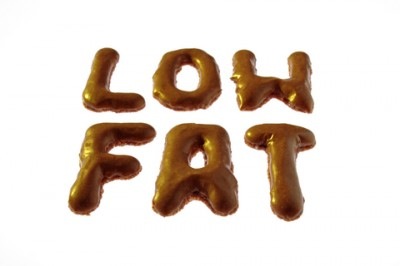 How much time do you spend in the supermarket aisle confused by the labels on mayo — or cookies — or just about every other item in the packaged bread aisle? What do reduced fat, low fat, light, fat free, or low in calories actually mean?
How much time do you spend in the supermarket aisle confused by the labels on mayo — or cookies — or just about every other item in the packaged bread aisle? What do reduced fat, low fat, light, fat free, or low in calories actually mean?
You practically have to walk around with a cheat sheet — or whip out your cell phone to use an app — to figure out if something actually lives up to the fatty or lean promise on the product’s label.
Checking Labels Will Give You A Clue
Packaged food labels list ingredients in descending order by weight, not amount. The first ingredient listed has the greatest amount by weight — the last ingredient is the one with the least amount by weight. That’s why preservatives are usually at the end of the ingredients list. A ton of chemicals are not necessary to increase shelf life so a little bit will do it — but fat, sugar, and grains have more heft and usually are closer to the beginning of the ingredients list.
Fat Labels
Labels have to include the total amount of fat, saturated fat and unsaturated fat. This carves the way for the low, reduced, and fat free categories.
- Low fat means 3 grams of fat or less per serving (or per 100 grams of food)
- Reduced fat means the food product contains 50% (or less) of the fat found in the regular version
- Less fat means 25% or less fat than the comparison food
- Fat free means the product has less than 0.5 grams of fat per serving, with no added fat or oil
The Low down On Low, Light (Lite), Lean, And Reduced Calories And Fat
- Reduced calorie (calories, not fat – see above) on the label means there’s at least 25% fewer calories per serving than in the regular (full calorie) version of the product
- Low calorie (calories, not fat – see above) means 40 calories or less per serving and less than 0.4 calories per gram of food
- Light (fat) means 50% or less of the fat than in the regular, full calorie, version
- Light (calories) means 1/3 fewer calories than the regular, full calorie, version
- Lean (meat, poultry or seafood) means less than 10 grams of fat, 4.5 grams of saturated fat, and 95 mg of cholesterol in a 100 gram serving
- Extra lean (meat, poultry or seafood) means less than 5 grams of fat, 2 grams of saturated fat, and 95 mg of cholesterol in a 100 gram serving
Confused???
Are you confused by the labeling rules? You’re not alone. You really need to read labels and look for the amount of fat grams, not just assume that a product labeled reduced fat is indeed low in fat.
For instance, a product labeled reduced fat just means that it contains at least 50% or less fat than the original full fat version of the same product. Unfortunately, that doesn’t necessarily mean that it is a low-fat product.
Here’s an example: Look at a box of cookies or a container of ice cream labeled reduced fat. If the fat content in the original full fat product is 20g and the fat has been reduced to 10g — a 50% reduction – the manufacturer is allowed to call the product reduced fat even though its fat content is still a little over 3 times higher than the 3 grams of fat per serving that officially qualifies as low fat. Premium ice cream can really snooker you with this labeling simply because the full fat version may have so much fat that the reduced fat version – even with 50% less fat – still contains a significant amount of fat.
The trick is to look carefully at the calorie count and fat breakdown on the nutrition label and note the numbers for each. A check of the ingredients label can also give you valuable information about the type of fat in the product.
Remember, these regulations apply to labeled packaged food products, not prepared food like you find in salad bars or for takeout.